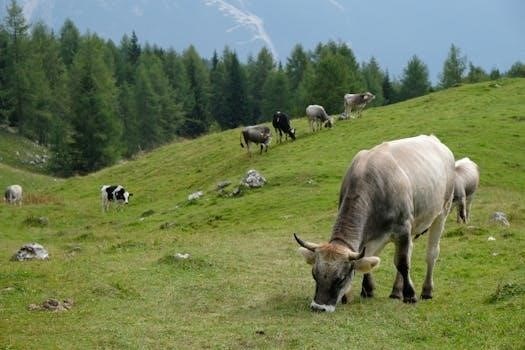Sangue di Giuda⁚ An Overview
Sangue di Giuda, translating to “Judas’ Blood,” is a sweet, red, often semi-sparkling (frizzante) wine originating from the Oltrepò Pavese region of Lombardy, Italy, known for its unique character and intriguing name.
General Information
Sangue di Giuda is a distinctive red wine produced in the Oltrepò Pavese region of Lombardy, Italy. Its name, literally translating to “Blood of Judas,” adds to its mystique. This wine is typically a sweet, gently sparkling (frizzante) red, characterized by its intense color and aromatic profile. The blend commonly includes Croatina (often referred to locally as Bonarda), Uva Rara, and Barbera grapes. It achieved autonomous DOC status on August 3, 2010, highlighting its notability and unique characteristics within the broader Oltrepò Pavese winemaking tradition. It’s known for being a perfect dessert wine.
History and Legends
The history of Sangue di Giuda is intertwined with local legends, including tales of Judas Iscariot and monastic winemaking traditions, adding intrigue to its already evocative name and character.
The Legend of Judas Iscariot
One legend connects the wine to Judas Iscariot, claiming he met his end in Acqui Terme. It is said that where his blood spilled, a vine grew, producing a sweet, red wine reminiscent of his blood. Another, less dramatic, interpretation suggests the name refers to the wine “betraying” the drinker with its sweetness. The association, regardless of its origin, has contributed significantly to the wine’s mystique and recognition.
Monastic Origins (Possible)
While the Judas Iscariot legend is popular, a more practical theory suggests the wine’s origins lie with monastic winemaking traditions. Monks in the Lombardy region, known for their viticultural skills, may have been the first to produce this sweet red wine. One humorous anecdote suggests that the monks even marked the barrels with the scary phrase “Sangue di Giuda” to keep mischievous nuns away from their precious wine cellar!

Geographical Origin
Sangue di Giuda is exclusively produced in the Oltrepò Pavese area of Lombardy, Italy, a region south of Milan known for its significant wine production and distinct terroir.
Oltrepò Pavese Region
The Oltrepò Pavese, nestled in the southern part of Lombardy, is the heartland of Sangue di Giuda. This area, south of Milan, is characterized by rolling hills and a climate perfectly suited for viticulture. The region boasts a long winemaking tradition, and its unique soil composition contributes significantly to the distinct flavors and characteristics of the grapes used in Sangue di Giuda. The area’s dedication to quality winemaking has allowed Sangue di Giuda to achieve its own autonomous DOC status, highlighting its significance within the Oltrepò Pavese.
Specific Municipalities of Production
While the Oltrepò Pavese region is the general origin for Sangue di Giuda, specific municipalities are particularly renowned for its production. The wine’s production is concentrated in areas like Broni, known for its vineyards and winemaking expertise. Canneto Pavese, Stradella, and Castana are also key areas where grapes are cultivated and the wine is crafted. These municipalities benefit from specific microclimates and soil variations within the Oltrepò Pavese, further influencing the character of Sangue di Giuda. The dedication of local winemakers in these towns ensures the preservation of traditional methods and the quality of the wine.

Grape Varieties
Sangue di Giuda primarily utilizes Croatina (often called Bonarda locally), Uva Rara, and Barbera grapes. These varieties contribute to the wine’s distinctive flavor profile and vibrant color, defining its unique character.
Croatina (Bonarda)
Croatina, frequently known as Bonarda within the Oltrepò Pavese region, plays a crucial role in Sangue di Giuda wines. It typically comprises a significant percentage of the blend, often between 25% and 65%. This grape lends the wine its intense color, fruity aromas of cherry and plum, and a certain body. Some sources suggest Croatina and Bonarda might be the same grape, known by different names due to regional variations, although this can cause confusion. The grape contributes to the wine’s overall structure and sweetness, making it a key component of the blend.
Uva Rara
Uva Rara is another important grape variety used in the production of Sangue di Giuda. While typically used in smaller proportions compared to Croatina, usually up to 20%, it contributes significantly to the wine’s aromatic profile and overall balance. This grape is known to add freshness and complexity to the blend. Unlike Croatina, Uva Rara is considered a distinct grape variety. It enhances the wine’s bouquet, often contributing subtle notes that complement the bolder fruit flavors from the Croatina. Its inclusion helps prevent the wine from being overly heavy or cloying, offering a lighter touch.
Barbera
Barbera is a permitted grape in the Sangue di Giuda blend, though not always present in every producer’s recipe. It’s typically used in a smaller percentage, falling within the DOC regulations which permit it in amounts between 25% and 65% alongside Croatina. Barbera adds a distinct acidity to the wine, balancing the sweetness and contributing to a more complex flavor profile. This varietal lends notes of cherry and plum, enhancing the overall fruitiness of the Sangue di Giuda. Its inclusion can create a brighter, more vibrant wine, preventing it from becoming too heavy or one-dimensional.
Wine Characteristics
Sangue di Giuda exhibits a vibrant ruby-red color, sweet taste, and aromatic profile. Often frizzante, it offers flavors of fresh fruit, balancing sweetness with crisp acidity and subtle almond notes.
Color and Appearance
Sangue di Giuda presents a visually appealing profile, characterized by its intense ruby-red hue, sometimes displaying purplish reflections. The wine’s color is often likened to the blood of Judas, contributing to its intriguing name. A creamy, medium-persistence foam may also be present, especially in the frizzante versions. This vibrant color and, if present, the delicate effervescence, contribute to the wine’s overall allure, creating an inviting visual experience for the consumer. Its brightness hints at the fresh and fruity character within, setting expectations for a delightful sensory experience.
Taste and Aroma
Sangue di Giuda offers a captivating aromatic profile, brimming with intense fruity notes. Ripe cherry, plum, blackberry, and mixed berries often dominate the nose, creating a fragrant and vinous experience. On the palate, the wine is pleasantly sweet, balanced by crisp acidity and a light effervescence in frizzante styles. A subtle almond note can also be detected, adding complexity and depth to the taste. Its generally smooth and medium-bodied, making it a refreshing and enjoyable sweet red wine, perfect for various occasions and pairings.
Sweetness and Body
Sangue di Giuda is characterized by its notable sweetness, which is carefully balanced to avoid being cloying. The wine typically presents a semi-sweet profile, complemented by a medium body that contributes to a smooth mouthfeel. This balance is further enhanced by the presence of crisp acidity and, in the frizzante versions, a light effervescence. The interplay of sweetness, body, and acidity creates a harmonious experience, making it a delightful and approachable wine. The wine’s structure is enough to hold all elements in balance, showcasing the fruit’s flavor.
Winemaking Style
Sangue di Giuda is often made in a frizzante style, meaning semi-sparkling. This effervescence is naturally occurring. This winemaking approach contributes to the wine’s fresh and lively character, enhancing its appeal.
Frizzante (Semi-Sparkling) Nature
The frizzante, or semi-sparkling, nature of Sangue di Giuda is a defining characteristic, achieved through natural effervescence rather than artificial carbonation. This gentle sparkle contributes significantly to the wine’s overall profile, offering a refreshing counterpoint to its inherent sweetness. The slight effervescence enhances the aromatic experience, lifting the fruity notes and adding a lively zest to the palate. The winemaking process carefully balances the sweetness with crisp acidity and the light, prickly sensation of the bubbles, creating a harmonious and enjoyable drinking experience, making it a refreshing choice.

DOC Status
Sangue di Giuda holds a Denominazione di Origine Controllata (DOC) status, an autonomous designation since 2010, attesting to its quality, typicity, and specific geographical origin within the Oltrepò Pavese region, ensuring its unique characteristics.
Autonomous Denomination
Prior to August 3, 2010, Sangue di Giuda was included within the broader Oltrepò Pavese DOC. However, due to its growing fame, distinctiveness, and unique characteristics, it was granted its own autonomous DOC status. This recognition signifies the wine’s unique qualities, separating it from other wines within the Oltrepò Pavese region. This elevation acknowledges its specific production area, traditional winemaking methods, and the distinct blend of grape varietals that contribute to its celebrated profile. This independent status highlights its historical importance and its significant contribution to the Italian wine landscape, solidifying its place as a noteworthy wine.
Food Pairing
Sangue di Giuda, with its inherent sweetness and fruity notes, pairs exceptionally well with a variety of desserts, especially those featuring fresh fruit, and also complements aged or creamy cheeses beautifully.
Desserts and Cheeses
The wine’s inherent sweetness makes it a delightful companion to desserts. Consider pairing it with fruit tarts, berry cobblers, or even a simple plate of fresh strawberries. The wine’s fruity notes complement the natural sugars in these desserts, creating a harmonious balance. Furthermore, Sangue di Giuda‘s slight effervescence can cleanse the palate, preventing the sweetness from becoming overwhelming. Its sweetness also plays nicely with certain cheeses, especially creamy varieties like Gorgonzola or Taleggio, or even drier, aged cheeses where the sweetness offers a counterpoint to the cheese’s savory character. The almond notes sometimes present can pair especially well with almond biscotti.

Alcohol Content
Sangue di Giuda typically features a lower alcohol by volume (ABV), usually ranging from 7% to 7.5%. This contributes to its easy-drinking nature and balanced sweetness, making it a lighter dessert wine.
Typical ABV
The Sangue di Giuda’s alcohol content is one of its defining characteristics, typically falling in the range of 7% to 7.5% ABV. This relatively low alcohol level contributes significantly to the wine’s overall profile, enhancing its approachability and making it a popular choice for those seeking a lighter, sweeter option. The lower ABV ensures that the sweetness is balanced, preventing it from becoming cloying and allowing the fruity flavors to shine. This makes it ideal for pairing with desserts or enjoying as a refreshing aperitif.
